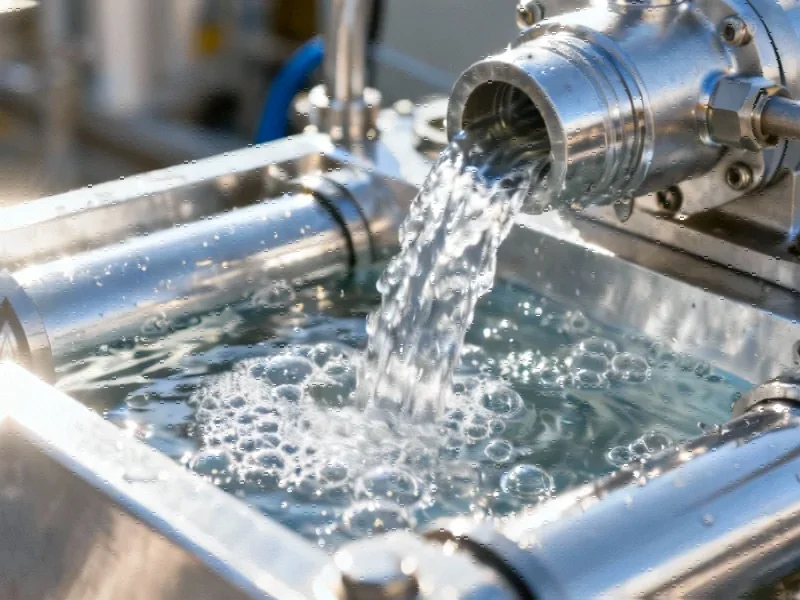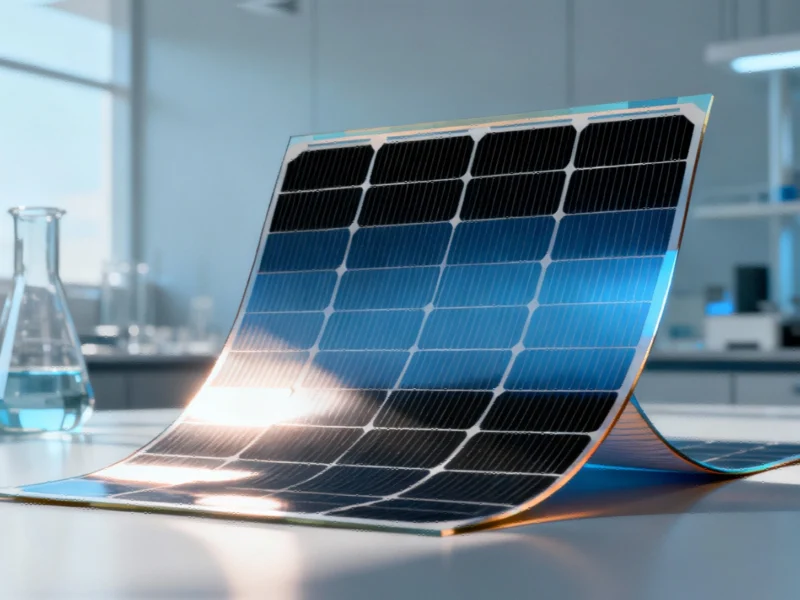Revolutionizing Hydrogen Production Through Nanotechnology
The quest for affordable green hydrogen has taken a significant leap forward with Dutch startup VSParticle’s breakthrough in electrolyzer technology. The company’s innovative approach addresses one of the most persistent barriers to cost-effective green hydrogen production: the reliance on iridium, a rare and expensive metal currently essential for Proton Exchange Membrane (PEM) electrolyzers.
According to CEO Aaike van Vugt, VSParticle’s nanoporous coating technology could reduce iridium requirements from 1-2 milligrams to just 0.1 milligram per unit. This dramatic reduction could potentially lower green hydrogen production costs to approximately $2.30 per kilogram, making it competitive with conventional hydrogen derived from natural gas, which ranges from $1.50 to $2.50 per kilogram according to International Energy Agency estimates.
The implications extend far beyond cost savings. As van Vugt emphasizes, “This $5 trillion industry can’t go on like it is. We can’t keep on using fossil fuels as feedstock.” The technology represents a crucial step toward rebuilding the global chemical industry around sustainable principles, using green electrons to drive chemical reactions instead of fossil fuels.
Rivian’s Make-or-Break Vehicle Enters the Arena
Meanwhile, in the electric vehicle sector, Rivian is preparing for what industry analysts describe as a pivotal moment. The company’s upcoming R2 small electric SUV, priced from $45,000 with a 300-mile range, represents a strategic shift toward mass-market appeal. Scheduled for U.S. sales beginning in early 2026, the R2 will be significantly more affordable than Rivian’s current R1 models and positioned to compete directly with Tesla’s Model Y.
CEO RJ Scaringe expresses strong confidence in the R2’s potential impact: “I think R2 is going to drive a step-change in overall EV adoption.” This optimism comes despite challenges including post-COVID parts shortages, inflation, and unfavorable policy environments. The company’s Normal, Illinois factory will have capacity to produce over 160,000 R2 vehicles annually, marking a substantial scaling of Rivian’s manufacturing capabilities.
Industry observer Ed Kim of AutoPacific underscores the vehicle’s importance, calling it Rivian’s “make or break vehicle” and noting that “the company’s survival depends on the success of R2 as its volume model.” The vehicle’s combination of competitive pricing, legitimate off-road capability, and advanced cabin technology could position it uniquely in the growing electric SUV market.
The Broader Clean Technology Landscape
These developments occur against a backdrop of rapid innovation across multiple sustainability sectors. Recent industry developments in European technology funding demonstrate continued investor confidence in climate-focused solutions. Similarly, advances in related innovations in semiconductor technology highlight the interconnected nature of the clean energy transition.
The transformation extends to digital infrastructure as well, with market trends showing how regions are balancing technological expansion with environmental considerations. These parallel developments underscore the comprehensive nature of the sustainability transformation required across multiple sectors.
Climate Reality and the Path Forward
The latest climate data presents a sobering context for these technological advances. Current projections indicate the world will likely breach the 1.5-degree Celsius warming limit within the next five to ten years, entering an “overshoot period” that could last 30-40 years before potentially returning to safer levels by century’s end.
This trajectory implies decades of increased climate impacts including more frequent and intense fires, droughts, heatwaves, and storms. The economic consequences are already substantial, with climate-related disasters costing over $200 billion in 2024 alone when global temperatures briefly touched the 1.5-degree threshold.
The necessary response involves not just phasing out fossil fuels by 2050 but also transforming global food systems, protecting forest ecosystems, and scaling carbon dioxide removal technologies. As one expert noted, “We have a crisis on our watch, and we really have to move very decisively.”
For those interested in a more detailed examination of these interconnected developments, recent technology coverage provides additional context about how innovations in green hydrogen and electric vehicles are shaping our clean energy future.
Conclusion: Acceleration Amid Adversity
The simultaneous advancement of green hydrogen technology and affordable electric vehicles represents hopeful progress in the broader climate fight. However, both developments must be understood within the urgent context of accelerating climate change. The coming decade will prove critical in determining whether technological innovation can outpace environmental degradation, making commercial successes like VSParticle’s electrolyzer technology and Rivian’s R2 not just business milestones but potential contributors to global climate solutions.
This article aggregates information from publicly available sources. All trademarks and copyrights belong to their respective owners.
Note: Featured image is for illustrative purposes only and does not represent any specific product, service, or entity mentioned in this article.



